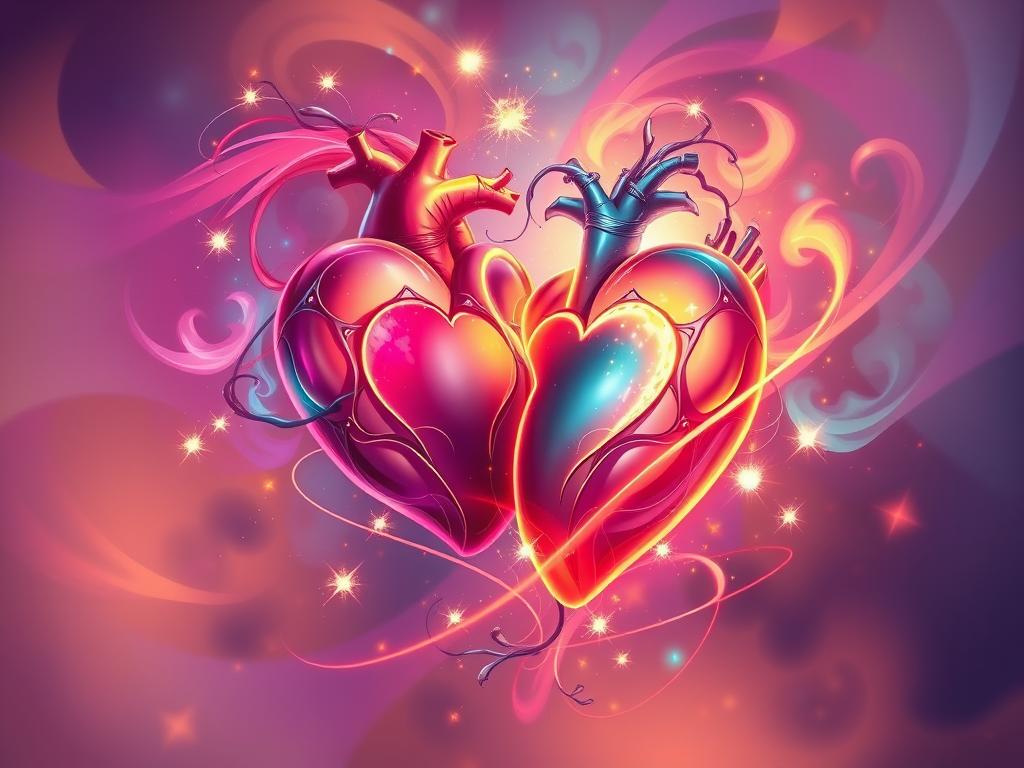
Love is a journey that evolves over time. The thrill of falling in love and the comfort of staying in love are two distinct phases in romantic relationships. Each stage brings its own set of emotions, challenges, and rewards, shaping the dynamics between partners.
When we fall in love, our brains flood with chemicals like dopamine and norepinephrine. These create a natural high, making us feel excited and attracted to our partner. It’s a time of passion and discovery, where everything seems new and thrilling.
Staying in love, on the other hand, is about deepening emotional intimacy. Hormones like oxytocin and vasopressin take center stage, promoting bonding and attachment. This phase is marked by a sense of comfort, security, and mutual respect. It’s less about the initial spark and more about building a lasting connection.
Understanding these differences is key to navigating the complexities of love. While falling in love is often effortless, staying in love requires intentional effort and commitment. It’s about embracing the realities of partnership, including compromise and collaboration.
Key Takeaways
- Falling in love involves intense passion and excitement
- Staying in love focuses on stability and mutual understanding
- Initial attraction drives falling in love
- Long-term commitment sustains staying in love
- Falling in love often idealizes the partner
- Staying in love embraces realistic views of each other
- Both stages contribute to the depth of romantic relationships
Understanding the Dynamics of Romantic Love
Romantic love is a complex journey that evolves through various love stages. From the initial spark to long-term commitment, relationships undergo significant changes in emotional responses and attachment styles.
Defining Falling in Love
Falling in love is an exhilarating experience. A study by Emmons et al. (1983) found that university students who were satisfied with their love life reported the highest levels of happiness. This stage is marked by intense emotions and physical attraction, often referred to as infatuation.
The Nature of Long-term Love
Long-term love develops into a deeper emotional connection. Research by Myers (1999) indicates that married individuals experience lower levels of depression compared to their unmarried counterparts. This stage is characterized by companionate love, emphasizing intimacy and commitment.
Emotional Responses in Different Love Stages
The emotional landscape shifts as relationships progress. Sternberg’s Triangular Theory of Love (1988) identifies three key components: passion, intimacy, and commitment. These elements interact differently across various love stages, influencing attachment styles and emotional responses.
| Love Stage | Dominant Component | Emotional Response |
|---|---|---|
| Infatuation | Passion | Intense excitement |
| Romantic Love | Passion and Intimacy | Deep connection |
| Companionate Love | Intimacy and Commitment | Comfort and security |
| Consummate Love | Passion, Intimacy, Commitment | Balanced fulfillment |
Understanding these dynamics helps couples navigate their relationship’s evolution, fostering stronger bonds and healthier attachment styles throughout different love stages.
The Intensity of Emotions: Falling vs. Staying in Love
Love’s journey is marked by distinct phases, each with its own emotional intensity. Falling in love is a rush, while staying in love is a steady warmth. This shows love’s dynamic nature and its impact on our emotions.

At first, falling in love floods our brains with euphoric chemicals. This intense state can dominate our lives. Studies reveal that people often spend a significant amount of time thinking about their partner, impacting productivity.
As relationships mature, the emotional landscape changes. The initial excitement gives way to a deeper, more stable bond. This doesn’t mean love diminishes; it evolves. The emotional intensity may wane, but the connection strengthens through shared experiences and mutual understanding.
| Aspect | Falling in Love | Staying in Love |
|---|---|---|
| Emotional State | Euphoric, intense | Stable, deep |
| Brain Chemistry | High dopamine levels | Balanced oxytocin and vasopressin |
| Focus | Partner-centric thoughts | Balanced life perspective |
| Decision Making | Impulsive choices | Conscious, joint decisions |
Attachment styles significantly influence relationship evolution. Anxious individuals may find the transition from intense early love to stability challenging. Avoidant types might struggle with the initial closeness. Recognizing these patterns aids couples in navigating their emotional journey.
“Love is not about finding the right person, but creating a right relationship. It’s not about how much love you have in the beginning but how much love you build till the end.” – Unknown
Falling in Love vs. Staying in Love: Key Differences
Love evolves in relationships, taking on different forms. Understanding these changes is crucial for couples navigating from initial attraction to lasting commitment. Let’s delve into the key differences between falling in love and staying in love.
Emotional Rollercoaster vs. Calm Waters
Emotions soar when falling in love. Excitement, nervousness, and euphoria are common. This emotional high is fueled by brain chemistry, particularly dopamine and norepinephrine, which create feelings of pleasure and giddiness. On the other hand, staying in love brings emotional stability. Couples feel secure in their affection, leading to a calmer, more balanced emotional state.
Idealization vs. Realism
New love often involves seeing a partner through rose-colored glasses. People focus on their partner’s best traits while overlooking flaws. As love matures, couples develop a more realistic view. They accept each other’s imperfections and work together to maintain intimacy. This shift in love perceptions allows for deeper, more authentic connections.
Present Focus vs. Future Planning
The early stages of love are all about the present. Couples want to spend every moment together, arranging their schedules to maximize time with each other. As love deepens, the focus shifts to the future. Partners begin planning their lives together, making joint decisions, and working as a team to overcome challenges.
| Aspect | Falling in Love | Staying in Love |
|---|---|---|
| Emotional State | Intense, euphoric | Stable, secure |
| Partner Perception | Idealized view | Realistic acceptance |
| Time Orientation | Present-focused | Future-oriented |
| Relationship Effort | Feels effortless | Requires intentional work |
The Role of Chemistry and Commitment
Love is a complex mix of chemistry and commitment. The journey from falling in love to staying in love involves significant changes in brain chemistry and emotional responses.
Initial Attraction and Infatuation
Chemistry in relationships starts with a spark. A 2006 National Geographic study found that the brain chemicals sparking romance differ from those for long-term attachment. Anthropologist Helen Fisher discovered that when we’re in love, our brain’s reward centers light up, similar to drug use or obsessive behavior.

Building a Lasting Bond
Long-term commitment requires more than just chemistry. John Gottman’s famous study showed that happy couples respond to their partner’s emotional needs 80% of the time. This highlights the importance of trust, intimacy, and mutual support in building lasting relationships.
Balancing Passion and Companionship
Maintaining relationship balance is key. The intense stage of love typically wanes after a few years. This shift allows for a deeper, more stable bond to form. Psychotherapist Joan E Childs suggests that successful long-term relationships blend initial passion with deep companionship.
“Chemistry can override common sense, but lasting love requires conscious choices and attunement,” says Hedy Schleifer, founder of Encounter-Centered Couples Transformation.
Understanding the role of chemistry and commitment in relationships can help couples navigate the transition from falling in love to staying in love. This fosters stronger, more fulfilling partnerships.
Navigating Challenges: New Love vs. Established Relationships
Love brings joy, but it also comes with its share of relationship challenges. New romances and long-term partnerships face different hurdles. These require unique approaches to conflict resolution and love maintenance.
In the early stages of love, couples often grapple with uncertainty and intense emotions. Open communication and setting clear boundaries are crucial for building a strong foundation. Established relationships, on the other hand, may struggle with maintaining intimacy and avoiding complacency.
Successful love maintenance in long-term partnerships requires continuous effort to grow together. Engaging in new, exciting activities can help keep the spark alive. Research shows that couples who participate in challenging experiences together often maintain stronger bonds.
“Doing new, exciting, and challenging activities together has huge benefits for relationships.” – Relationship Expert
To navigate these challenges effectively, consider the following strategies:
- Prioritize quality face-to-face time without distractions
- Maintain individual interests and friendships outside the relationship
- Practice active listening and express concerns respectfully
- Engage in joint activities that benefit others or your community
- Regularly assess and discuss your shared goals and values
| Relationship Stage | Common Challenges | Effective Strategies |
|---|---|---|
| New Love (0-2 years) | Uncertainty, jealousy, intense emotions | Open communication, setting boundaries |
| Established (5+ years) | Maintaining intimacy, avoiding complacency | Continuous effort, shared activities, regular check-ins |
Remember, every relationship is unique. By understanding and addressing your specific challenges, you can build a stronger, more fulfilling partnership. This partnership will stand the test of time.
Evolving Communication Patterns in Love
As love grows, so does the way couples communicate. They transition from the excitement of falling in love to the commitment of staying in love. This shift in dialogue is key to building a lasting connection.
Early Stage Communication
In the beginning, couples exchange messages with great enthusiasm. They share personal stories, dreams, and feelings. This stage is filled with intense emotions and a strong desire to know each other inside out. Texts and long calls are common.
Long-term Relationship Dialogue
As relationships grow, so does the way they communicate. Couples develop their own language, filled with inside jokes. They delve into deeper topics, like shared goals and challenges. This stage is about building a life together, not just getting to know each other.
Importance of Effective Communication
Effective communication is vital at every stage of a relationship. It helps solve conflicts, express needs, and keeps emotional bonds strong. Couples who communicate well often report higher satisfaction. Open, honest conversations prevent misunderstandings and build trust.
“The single biggest problem in communication is the illusion that it has taken place.” – George Bernard Shaw
Studies indicate that active listening and empathy are crucial for strong relationships. By focusing on clear, compassionate communication, partners can overcome challenges and deepen their connection over time.
Maintaining Romance: From Falling to Staying in Love
The transition from falling in love to maintaining that love is a complex dance. It requires a blend of romantic upkeep and relationship evolution. Statistics reveal that only 40 to 50 percent of married couples endure, underscoring the need for sustained affection. Dr. John Gottman’s work underscores the importance of cultivating friendship and deep affection in marriage.
Effort is essential in sustaining love. Couples who prioritize fun and friendship often enjoy more robust relationships. This is supported by Scott Stanley and Howard Markman’s research. Gary Chapman’s “The 5 Love Languages” and TY Tashiro’s “The Science of Happily Ever After” provide insights into keeping romance alive.
Physical intimacy is vital in maintaining romantic connections. Judith Wallerstein and Sandra Blakeslee emphasize that in a fulfilling marriage, sex and love are intertwined. This union builds emotional reserves and fortifies the bond between partners. By valuing their relationship and embracing these principles, couples can nurture a love that is both thrilling and enduring.
